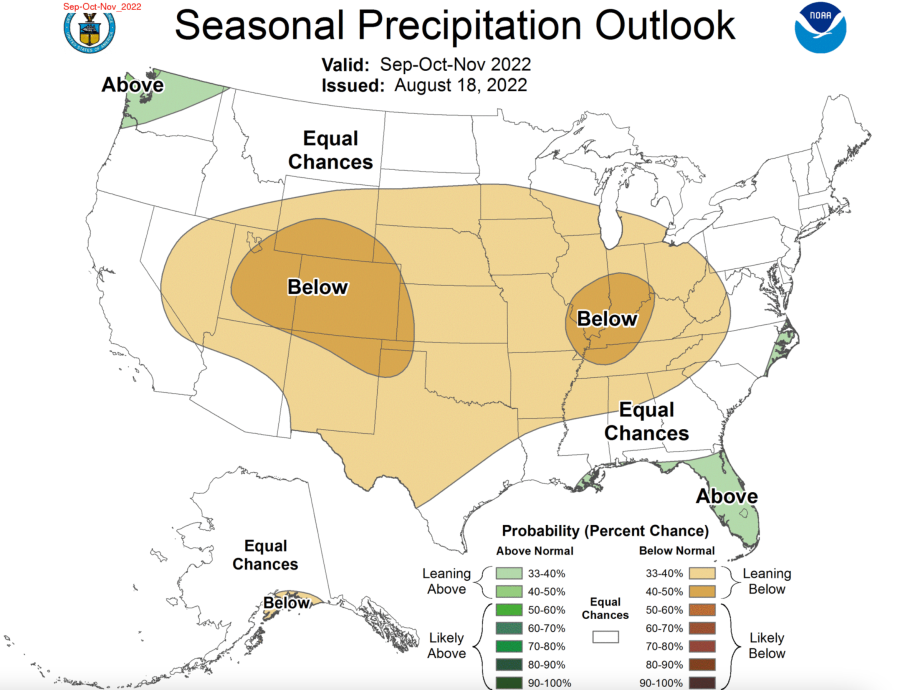(NEXSTAR) – Meteorologists are pretty confident the La Niña conditions we’ve seen all year are going to be with us at least a few months longer. There’s a 91% chance the La Niña conditions last from September to November, the National Weather Service’s Climate Prediction Center said in an update Thursday.
Those odds have strengthened since the meteorologists’ last update in August.
According to the latest outlook, it looks like this La Niña fall is set to be a hot one. Every state in the country, except for the most northern reaches that border Canada, is forecast to see above-average temperatures from September through November.
Most of coastal California has around a 40% chance of being hotter than average. Inland and Southern California have an even stronger chance of extra heat in the fall season.

Around the country, Colorado, Utah, Texas, New York Pennsylvania, New Jersey and the New England states have the highest chances of an unseasonably hot fall.
Why a triple-dip La Niña could be bad news
La Niña will also mean less rain this fall for most of the country, according to a long-range outlook. From September through November, it’s set to be drier-than-normal across pretty much the entire central U.S.

California isn’t projected to have a particularly wet or particularly dry fall, but it’s winter meteorologists will be keeping an extra close eye on.
If La Niña continues, it’ll be the third La Niña winter in a row – a rare phenomenon we’ve only seen twice since 1950.
A third consecutive La Niña year would be harsh in western states like California that are already suffering a bad drought. California gets most of its rain in the winter, and a La Niña winter could bring drier conditions to much of the state.
“Here in the Washington, D.C. area, it generally rains all year round. So if we have a couple of dry months, it’s OK because we can make it up another time,” Mike Halpert, deputy director of the Climate Prediction Center, explained. “When you’re in California and the Southwest, 90% of the rain falls in that fairly short winter and spring season. So if you miss that, you’re not going to make that up when you get into the summertime.”
What happens after November is less certain. Current models have the odds of a La Niña at about 50%.





















